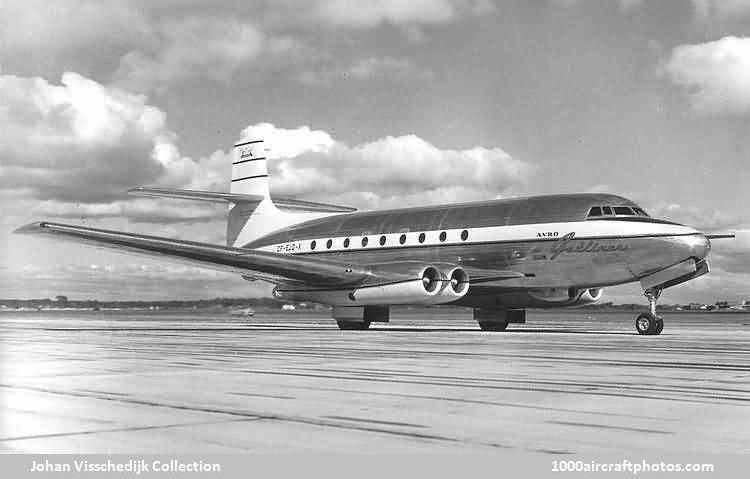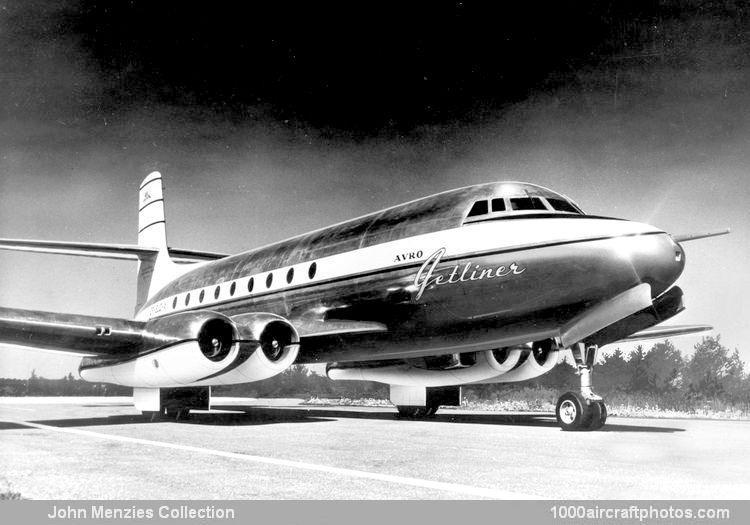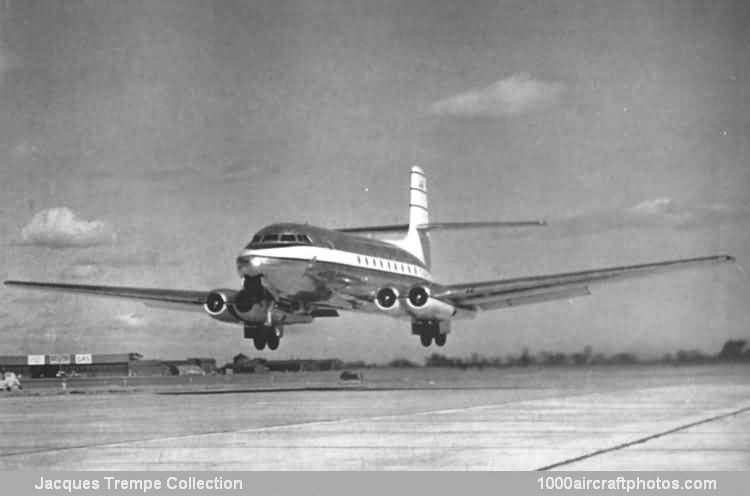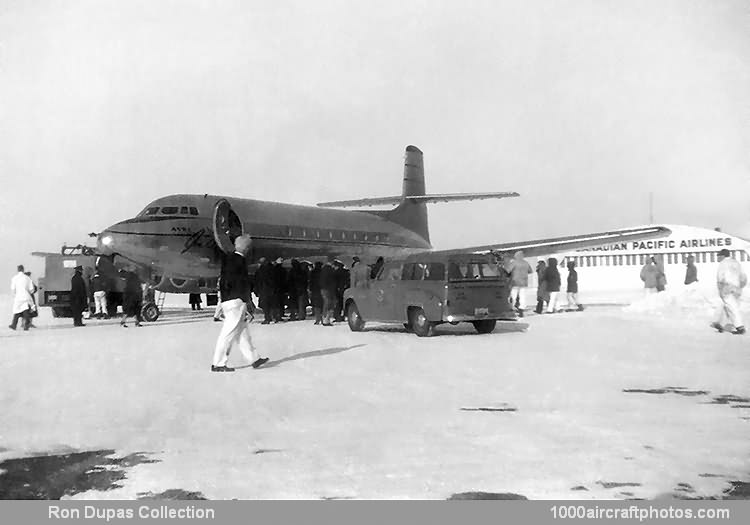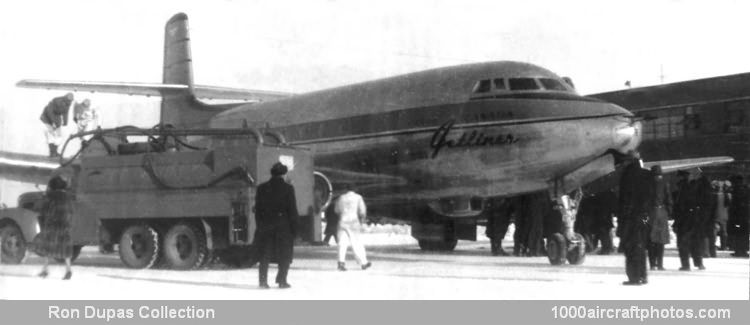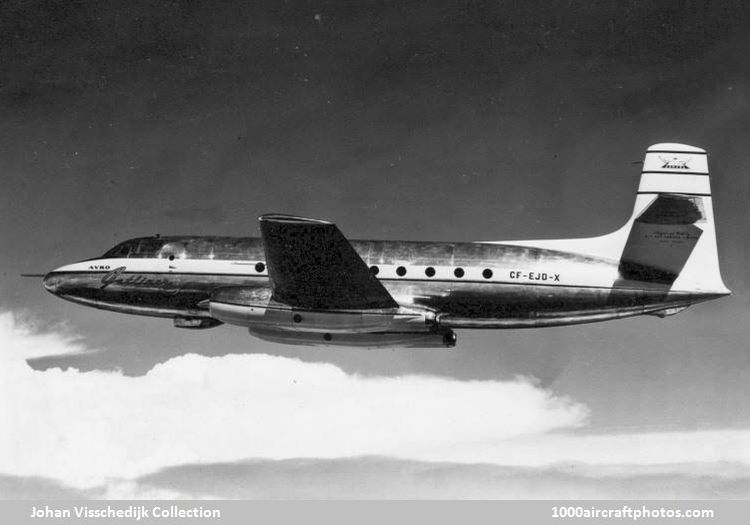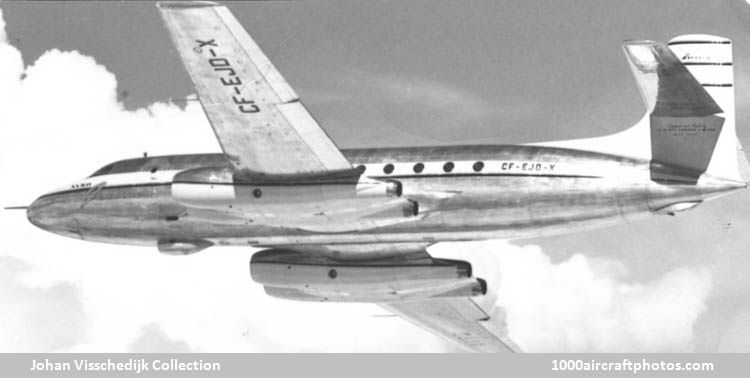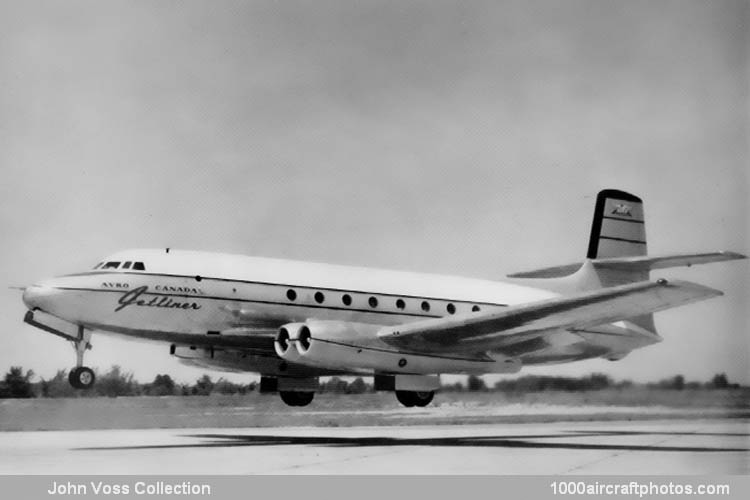09/30/2012. Remarks by
Johan Visschedijk: "Trans-Canada Air Lines (TCA) and A.V. Roe & Co. had been in contact over transatlantic operation of the Victory Aircraft-built Lancaster XPPs, and discussions developed between them on the feasibility of a jet transport. The first design studies for the aircraft were made at Manchester and one projected design was designated Avro 703, a 36-seat jet transport. The project was a logical one for Avro Canada when it was set up in December 1945. Design studies in Canada started at the end of January 1946 upon the arrival of James C. Floyd from Manchester, who was appointed project designer and remained in that position until becoming Works Manager on 9 July, 1951. Guest Hake then succeeded Floyd for the balance of the C-102 project.
With the benefit of earlier studies in Britain, a proposal was quickly prepared and given to TCA, apparently in February. The proposal outlined two aircraft that might meet TCA's requirements, one powered by four 1,010 shp Armstrong Siddeley Mamba propeller-turbines and the other with two 5,500 lb (1,677 kg) st Rolls-Royce AJ.65, later named Avon, engines. TCA quickly decided that the pure-jet version was the one it wanted. Avro Canada then presented the proposal in more detail in March 1946 and the aircraft at that time was planned for 30 passengers.
Following discussions between TCA and Avro Canada, TCA sent a letter of intent on April 9, 1946, saying that the airline was prepared to accept the proposed aircraft if Avro Canada quoted a fixed price and met certain other conditions. Avro Canada quoted a price and delivery by October 9, 1948, and the project began. TCA produced a detailed specification for the aircraft, now designated the C-102 Jetliner, and Avro Canada brought the March proposal into line with it and detail engineering began in the summer of 1946. The engines, which in the earlier proposal were slightly beneath the wing, were moved up and the jet pipes passed through the spars.
In March 1947 Avro Canada found that the British authorities would not release the AJ.65 engine for civil use, and decided to install four of the smaller Rolls-Royce Derwent engines. These centrifugal-flow turbines had a higher fuel consumption than the axial-flow AJ.65, so additional fuel had to be carried to maintain the range. The wing was increased in span, and the larger-diameter Derwents were installed in pairs and the engines were tilted in both the horizontal and vertical planes to give the most compact installation. The nacelles were designed in accordance with German wartime research. TCA was most disturbed over the introduction of the Derwent engines and from that time felt that the aircraft was of little use to them. Subsequently the airline was released from its commitment to purchase the aircraft.
The design was now in its final form. The aircraft had a pressurized fuselage of 10 ft (3.05 m) diameter, and passenger seating arrangements for 30, 40, 46, 48 and 50 passengers were proposed. A pressure differential of 8.3 lb/sq.in (0.584 kg/sq.cm) was designed to give sea level pressure to 21,250 ft (6,477 m) and 4,000 ft (1,219 m) cabin pressure at 30,000 ft (9,143 m) altitude. The two-spar wing was of conventional stressed-skin construction and had integral fuel tanks. Plain split flaps were installed. The tail surfaces were of stressed-skin construction. The elevators and rudder were made in two pieces, the rear portion being manually operated and the front portion power operated. The ailerons had an hydraulic assister installed in the control system.
(
John Menzies Collection)
Taxiing tests were begun on August 8, 1949.
(
Jacques Trempe Collection)
The first flight was made on August 10 at Malton Airport, the flight crew was James H. Orrell from A.V. Roe Manchester, and Donald H. Rogers and flight engineer A. William Baker. This was the first flight of a jet transport in North America and the second in the world, the D.H.106 Cornet having first flown two weeks earlier in Britain.
The first flight had been made while the factory was closed for a summer holiday; the second was made on August 16 by the same crew, and Avro Canada employees watched the demonstration. At the conclusion of the flight the main landing gear would not lower as the uplocks could not be disengaged. After using all emergency procedures without success, the C-102 was set down on the extended nose wheel, the ends of the jet pipes and the bottom of the rear fuselage. Only slight damage was done and the aircraft was repaired and flew again on September 20, 1948.
(
Ron Dupas Collection)
Test flying of the prototype continued, and it was demonstrated to various Canadian and US airlines and to both the RCAF and the USAF and made a number of inter-city flights. Comments were favorable, and all its passengers were impressed with the lack of noise and vibration. The performance achieved on a few of the inter-city flights of varying distances is given here as an indication of its capability over typical airline routes.
During 1950 the Canadian Air Transport Board, the National Aeronautical Establishment and the National Research Council (NRC) undertook studies on the C-102. In April Dr. D.C. McPhail of NRC visited J.T. Dyment, TCA's Chief Engineer, and they agreed that the C-102 design was not acceptable because its fuel consumption was too high which adversely affected payload and range, the nacelle/wing configuration caused high drag and the wing section was of a relatively high drag type. These comments, almost certainly, must have referred to the prototype and might have been modified in the production version.
Several points were raised concerning the prototype. The center of gravity, while satisfactory, was limited to a travel of 10% of the chord, preventing random seating, and the travel was to be increased to 15% on the production version. Full fuselage pressure testing had not been done and this restricted the pressure differential at high altitude. From TCA's standpoint the critical item was its reserve fuel requirements coupled with a suitable payload. ILS, intended for early installation at Canadian airports in 1946, had been delayed, and its lack increased TCA's reserve requirements, and TCA felt that the new engines proposed for the production version would not meet the fuel requirements.
(
John Voss Collection)
After the C-102 program was discontinued in December 1951, the prototype was retained by Avro Canada. In 1952 the aircraft was leased to Hughes Aircraft Co. with the initial intention of testing electronic equipment. It flew to Los Angeles on April 7-8 and remained there until September 29 when it left to return to Malton on the 30th. Howard Hughes flew the aircraft for 10.5 of its total of 13 hours flight time in California, and he became so interested in the machine that it was not used for electronic testing but considered for production by his own company. This idea was never implemented.
Then the prototype was used in Canada as an observation platform for CF-100 tests, including canopy jettisoning, gun pack air firing, fuselage rocket pack air firing, tuft observation during stall tests and live ejection test. Its last flight was made on November 23, 1956, by D.H. Rogers, and the aircraft was broken up in December. The aircraft was offered to the National Research Council for preservation as a museum specimen before being broken up, but there were no facilities for storing complete aircraft so only the nose was preserved and is now in the National Aeronautical Collection. It is estimated that during its career the prototype flew approximately 425 hours. Of this total, Don Rogers was the pilot for 375 hr 50 min, including 16 flights as co-pilot to Jimmy Orrell. Michael Cooper-Slipper did the remainder of the flying."
